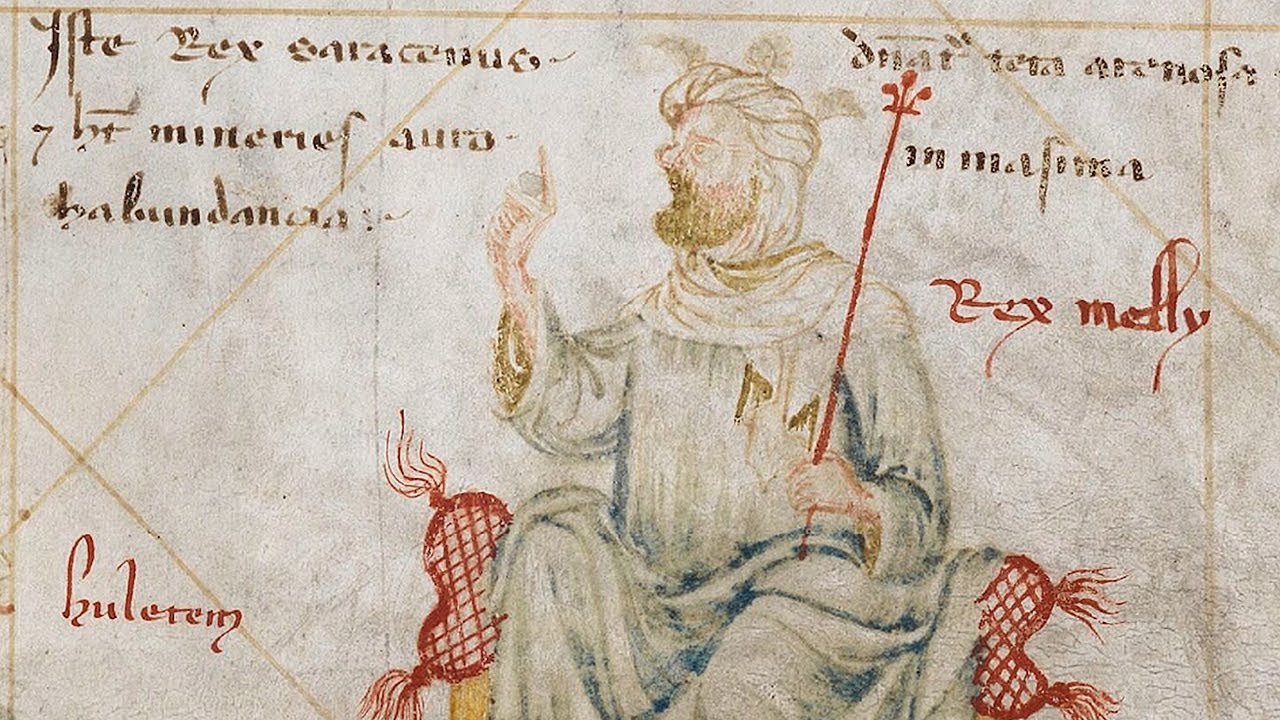Mansa Musa, one of the wealthiest people who ever lived - Jessica Smith
Summary
TLDRMansa Musa, the 14th-century ruler of the Mali Empire, is considered one of the wealthiest individuals in history. His reign expanded Mali's territory, strategically annexing Timbuktu and controlling key trade routes. During his 1324 pilgrimage to Mecca, his lavish spending of gold left a lasting impression and even caused inflation in some regions. Beyond wealth, Mansa Musa invested in education and religion, building the Djinguereber Mosque and establishing Timbuktu as a renowned center of learning. His legacy endures today through historical landmarks and the lasting influence of Mali's golden age.
Takeaways
- 👑 Mansa Musa, the 14th-century ruler of the Mali Empire, is considered one of the wealthiest people in history.
- 🌍 His reign saw the Mali Empire expand significantly, with strategic annexations like Timbuktu and control over key trade routes.
- 💰 The extent of Mansa Musa's wealth was first witnessed during his pilgrimage to Mecca in 1324, where he displayed immense opulence.
- 🐫 His pilgrimage entourage was enormous, consisting of tens of thousands of people, and a vast amount of gold.
- 💵 His spending in cities like Cairo was so substantial it reportedly caused regional economic inflation.
- 🗺️ Mansa Musa's journey and wealth became legendary, and he was depicted on the 1375 Catalan Atlas, marking his empire's prominence.
- 🕌 As a devout Muslim, Mansa Musa was instrumental in the development of Timbuktu into a center of religion and learning.
- 🏛️ He commissioned the construction of the Djinguereber Mosque and established a major university in Timbuktu, attracting scholars from across the Islamic world.
- 🏙️ Under his rule, the Mali Empire became highly urbanized with numerous schools, mosques, and densely populated towns.
- 🏛️ Mansa Musa's legacy endures, with mausoleums, libraries, and mosques still standing as a testament to Mali's golden age.
Q & A
Who is Mansa Musa and what is his historical significance?
-Mansa Musa, also known as the King of Kings, was a 14th-century emperor of the Mali Empire. He is historically significant for his immense wealth and his contributions to the expansion and cultural development of the Mali Empire.
What was the state of Europe during Mansa Musa's reign?
-During Mansa Musa's reign, much of Europe was experiencing famine and civil wars, in contrast to the flourishing African kingdoms and the Islamic world.
How did Mansa Musa strategically expand the Mali Empire?
-Mansa Musa expanded the Mali Empire by annexing the city of Timbuktu and reestablishing power over the city of Gao, which gave him control over important trade routes between the Mediterranean and the West African Coast.
What natural resources were abundant in the Mali Empire during Mansa Musa's rule?
-The Mali Empire was rich in natural resources such as gold and salt, which contributed to Mansa Musa's immense wealth.
Describe Mansa Musa's pilgrimage to Mecca in 1324.
-Mansa Musa's pilgrimage to Mecca in 1324 was marked by an extravagant caravan that included tens of thousands of people, 500 heralds bearing gold staffs, and camels and horses carrying gold bars. He spent lavishly along the way, impacting the regional economy.
How did Mansa Musa's spending during his pilgrimage affect the economies of the cities he visited?
-Mansa Musa's spending during his pilgrimage to Mecca is said to have destabilized the regional economy, causing mass inflation due to the large amounts of gold he spent and distributed.
What was the impact of Mansa Musa's pilgrimage on the perception of Mali and its king?
-Mansa Musa's pilgrimage to Mecca and his extravagant display of wealth led to tales of his amazing wealth spreading throughout the Mediterranean, elevating Mali and its king to near legendary status.
How did Mansa Musa contribute to the cultural development of Timbuktu?
-As a devout Muslim, Mansa Musa took a particular interest in Timbuktu. Upon returning from his pilgrimage, he had the great Djinguereber Mosque built and established a major university, attracting scholars and students from the Islamic world.
What urban developments occurred in the Mali Empire under Mansa Musa's rule?
-Under Mansa Musa, the Empire became urbanized with the establishment of schools and mosques in hundreds of densely populated towns.
What are some of the lasting legacies of Mansa Musa that can still be seen today?
-Mansa Musa's legacy includes mausoleums, libraries, and mosques that stand as a testament to the golden age of Mali's history.
Why is Mansa Musa's inclusion on the 1375 Catalan Atlas significant?
-Mansa Musa's inclusion on the 1375 Catalan Atlas, one of the most important world maps of Medieval Europe, signified the recognition of his empire's wealth and power on a global scale.
Outlines

Dieser Bereich ist nur für Premium-Benutzer verfügbar. Bitte führen Sie ein Upgrade durch, um auf diesen Abschnitt zuzugreifen.
Upgrade durchführenMindmap

Dieser Bereich ist nur für Premium-Benutzer verfügbar. Bitte führen Sie ein Upgrade durch, um auf diesen Abschnitt zuzugreifen.
Upgrade durchführenKeywords

Dieser Bereich ist nur für Premium-Benutzer verfügbar. Bitte führen Sie ein Upgrade durch, um auf diesen Abschnitt zuzugreifen.
Upgrade durchführenHighlights

Dieser Bereich ist nur für Premium-Benutzer verfügbar. Bitte führen Sie ein Upgrade durch, um auf diesen Abschnitt zuzugreifen.
Upgrade durchführenTranscripts

Dieser Bereich ist nur für Premium-Benutzer verfügbar. Bitte führen Sie ein Upgrade durch, um auf diesen Abschnitt zuzugreifen.
Upgrade durchführen5.0 / 5 (0 votes)






